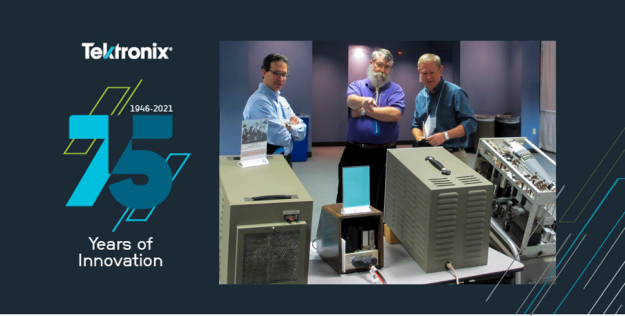

The vintageTEK Museum on Tektronix’s Beaverton, Ore., campus holds thousands of pieces of the 75-year-old company’s historic equipment, dating back to 1946. Since 2011, it’s where engineering and electronics enthusiasts of all ages have gone for hands-on tours, and where engineers volunteer to restore pieces for future display. The museum also provides education about Tek oscilloscopes, frequency counters, multimeters and more, and even loans out the equipment for short-term use.
From the start, the museum’s ultimate purpose has been to inspire and encourage the next generation of engineers. Before the COVID-19 pandemic, the museum regularly hosted tours of youth robotics and rocketry groups and summer camps and provided in-classroom demonstrations. (Virtual events continued during the pandemic.)
Dave Brown, who worked at Tektronix from 1976 to 2010 (ending as vice president of central engineering) and runs the museum, can attest to the keen interest students show in Tek products and how they’ve facilitated and shaped a wide range of technologies. “They either come in with an interest, or a spark might be lit while they’re here,” he says.
For 8- to 10-year-olds, the glow of vacuum tubes may inspire awe. Twelve- and 13-year-olds light up when they can measure actions that occur in 1 billionth of a second, or when seeing soundwaves from their own voice or a guitar. “Kids have a lot of tech with no buttons these days, like with cellphones. They love the knobs and switches at the museum,” says Brown. “Their fascination with something new is exciting to see. The demonstrator board lets you play table tennis on the oscilloscopes; they’re getting excited about a 49-year-old computer program.”

Dave Brown (right), president of the vintageTEK museum, welcomes Fluke President Mark Tremblay and Tektronix ASIC Design Fellow Dan Knierim to the vintageTEK Museum.
Taking vintageTEK to the students
Retired electrical engineer Tom Goodapple started collecting vintage Tektronix oscilloscopes more than 20 years ago, which led him to volunteer at vintageTEK. He’s led several student tours, and has taken museum objects to student events such as University of Portland’s Family STEM Day, and Oregon Mathematics Engineering and Science Achievement’s MESADay, which includes hands-on STEM competitions and demonstrations for middle school and high school students.
“We’re showing kids what’s been done in the past and the impact it’s had, so they can make the connection to how they might contribute to technology in the future,” says Goodapple.
Tong Zhang, Ph.D., executive director of Oregon MESA, works with 13 school districts in the Northwest, recruiting students who are underserved in STEM. She notes that with so much virtual technology on the internet and in apps, “it’s really impactful for students to see and touch technology. It takes the abstract and makes it much more real. Being able to see the equipment from the vintageTEK museum—and the evolution of technology—a light bulb comes on for kids, a tangible way to see how technology interfaces with the real world. Bringing actual equipment to students is pretty special.”
Brown points out that high school students who excel at math and science might be encouraged to go into engineering in college, but their actual engineering training may not begin until their junior year. “It can take a lot of determination to hang with it, so something like vintageTEK, which shows students the ‘how’ and the ‘why’ of technology, can help keep them interested,” he says. “There’s no substitute for hands-on experience with the history of technology, and who designed it and how it was used, so they can connect the dots to how they might work in technology and help society in their future careers.”
For example, imaging the technology that Tektronix innovated on the Hubble Space Telescope for NASA in 1989 is used today in smartphones, allowing them to take photos—a much-used technology that has changed the world, and is immediately relatable to today’s teens.
“Tektronix has been a remarkable company over its 75 years and has very loyal collectors of its historic equipment,” says Brown. “The instruments have been at the forefront of many technologies and are works of art.” Brown gets excited showing the original, engraved legends on the panel, the beauty of the internal wiring, and the silkscreened labeling of components and adjustments.
But again, the real purpose of the museum is to share technology with youth and inspire STEM career paths. And it appears to be achieving that mission. When giving student tours, Tom Goodapple often finds himself “blown away by the questions they have and delighted to see the spark of curiosity in them. One kid might know that a guitar string produces a soundwave and is excited to see it visualized on the oscilloscope screen—there’s a spark of curiosity. Another could have a question about AM/FM modulation—another spark.”
And so, while vintageTEK holds a wealth of history and vintage equipment, it is still inspiring minds to engineer the technology of the future.


